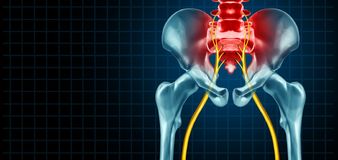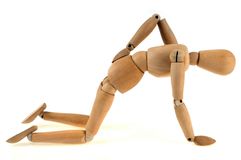What is the Sciatic Nerve and why does it cause some so much pain?
Lets first look at the anatomy of the body and where the nerve originates from. Along the spinal cord, nerves branch out into the body. The sciatic nerve in particular originates in the low back, combined of motor and sensory fibers branching out of L4 to S3. Knowing where this nerve originates is an important part in knowing how to keep it healthy.
What are some things you can do to prevent the Sciatic nerve from getting “angry” inflamed, or pinched? This nerve is relatively thicker than other nerves because it contains two types of nerves, movement and sensory. When it leaves the spinal cord, it travels down through the pelvis, under or through the piriformis muscle, then down the leg. You have a sciatic nerve on both the right and the left. Most time pain is only felt on one side of the body.
What causes the sciatic nerve to give so many people pain….either a literal pain in the butt or pain radiating down the leg?

Because of the anatomy and where the nerve flows, it can get pinched by either a bulging disc in L4 or L5 of the spine (bulging discs are no joke and need to be properly diagnosed and treated), it can become pinched or compressed by lumbar spinal stenosis (a narrowing of the spinal cord in the low back) or it can get smashed between the piriformis if that muscle becomes tight due to piriformis syndrome.
How should the sciatica pain should addressed? If you have a slipped or bulging disc, you will likely want to seek medical treatment, if you have lumbar stenosis, a PT or Chiropractor can help with that, and If you have piriformis syndrome, hiring a personal trainer, physical therapist, and following a self-care routine will help.
Time and patience heal most sciatica pain.
A proper self-care routine is vital for those who suffer from sciatica pain. If you follow these steps daily, not only will you start to feel improvements, but you will also prevent the pain from returning in the future. The routine at the bottom of the page is specifically for piriformis syndrome, which is a most common cause of sciatica pain. This is due to chronically tight low back and piriformis (muscles that lay under the gluteus maximus). Click on ‘Sciatica exercise’ below; the link will take you to a short video which you can add to your daily routine to begin feeling relief.
Stretching, Pendiculation, and strengthening will be the keys to eliminating the body of pain and ensuring it does not return. Static Stretching and massage are good and they work, but not as a lone tool.
Pendiculation moments…such as yawning and stretching the arms overhead upon waking are an example of this technique, are an amazing tool to awaken the mind body connection, which assists in relaxing the tight muscle and eliminating stress.
The last piece of the puzzle is to strengthen areas of the body that are weak, such as the Glute maximus, medius, minimus, as well as the deep core stabilizers.
However, it is important to note that it is very wise to avoid certain actions/activities during flare ups to give the sciatica pain and its root cause a chance to subside. Be very mindful of your alignment/form and avoid power exercises like deep squats, deadlifts and tire flips or explosive movements of any kind.
If you are someone who engages in consistent, high intensity workouts, the repetitive and strenuous overuse wear and tear can be detrimental to your health, longterm. Consider changing it up a bit, especially as you progress in age.
Resources and further reading:
1. Somatics-reawakening the mind’s control of movement, flexibility, and health by Thomas Hanna
2. The Pain Relief Secret-How to retrain your nervous system, heal your body, and overcome chronic pain By Sarah Warren
Jennifer Noll, MS
Owner, Restore Movement
www.restoremvmt.com









